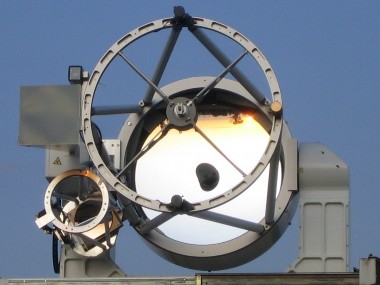Investigation and quantification of feedback processes between the atmosphere and the soil-vegetation system in a changing climate
 Project Leader: Prof. Dr. Volker Wulfmeyer, Institute of Physics and Meteorology
Project Leader: Prof. Dr. Volker Wulfmeyer, Institute of Physics and Meteorology
Funding period: 2015-2018
For the simulation of regional climate change including extreme events, the development of a new generation of regional climate models is essential. Current simulations of the statistics of temperature and precipitation are not accurate enough in many regions in Europe particularly over complex terrain.
Current model evaluations indicate that improved simulations can be realised by advancing (a) the representation of the energy balance at the land surface, (b) simulations of soil-vegetation-atmosphere (SVA) feedback including entrainment, and (c) the simulation of clouds and precipitation by omission of the parameterisation of deep convection.
In this project, research in these three areas will be combined for the development and the improvement of the FOR 1695 Integrated Land System Model (ILMS).This will be achieved by three work packages:
(1) The study of SVA feedback by means of measurements with a synergy of scanning remote sensing systems and simultaneous simulations with the Atmosphere-Land surface-Crop Model (ALCM) down to the grey zone. Corresponding observations and modelling on scales, which resolve turbulence, will improve process understanding and will be used for studying the parameterisation of turbulence in the convective boundary layer. Upscaling of fluxes over a variety of model resolutions and detailed comparisons with turbulence profiling using a synergy of lidar system will give insight in the representation of surface fluxes and guidance for the improvement of turbulence parameterisations.
(2) Performance of a verification run of ALCM, which includes recent improvements with respect to the representation of agricultural land cover, over Central Europe with convection-permitting (CP) resolution. It is expected that at this scale SVA feedback over heterogeneous and agricultural landscapes will be better represented and their coupling to clouds and precipitation will be more realistic as the parameterisation of deep convection can be avoided. This will be proven by detailed model verification including scores for extreme value statistics of temperature and precipitation.
(3) Performance of a first CP-resolution climate projection until 2040 in order to reduce the current deficiencies of global and regional climate projections such as errors introduced by the parameterisation of deep convection. Again, the evolution of temperature and precipitation statistics will be studied. Indices for the characterisation of droughts and extreme precipitation will be derived.
The simulations will give guidance on the development of the European climate for optimising agricultural activities with a focus on Southwest Germany. Within the projection, changes of land cover by agricultural management and decision processes are part of the ILMS and therefore feed back to the climate. This will also permit to study the respective importance of land cover changes and greenhouse forcing on the evolution of regional climate within the next decades.
Phase 1: Water and energy cycling between croplands and the atmosphere: Field studies and integrated climate simulations on the convection-permitting scale (funding period 2012-2015)
